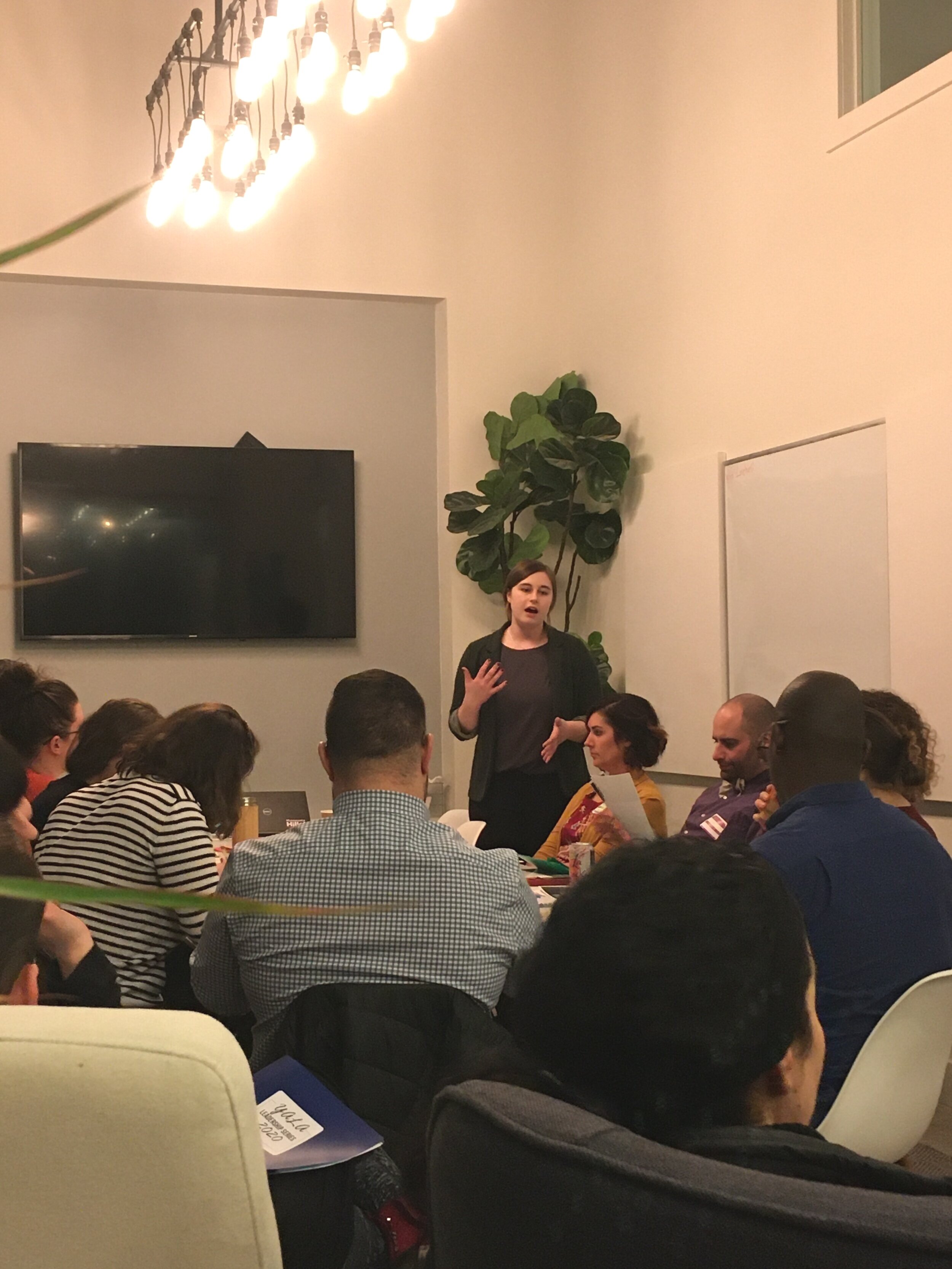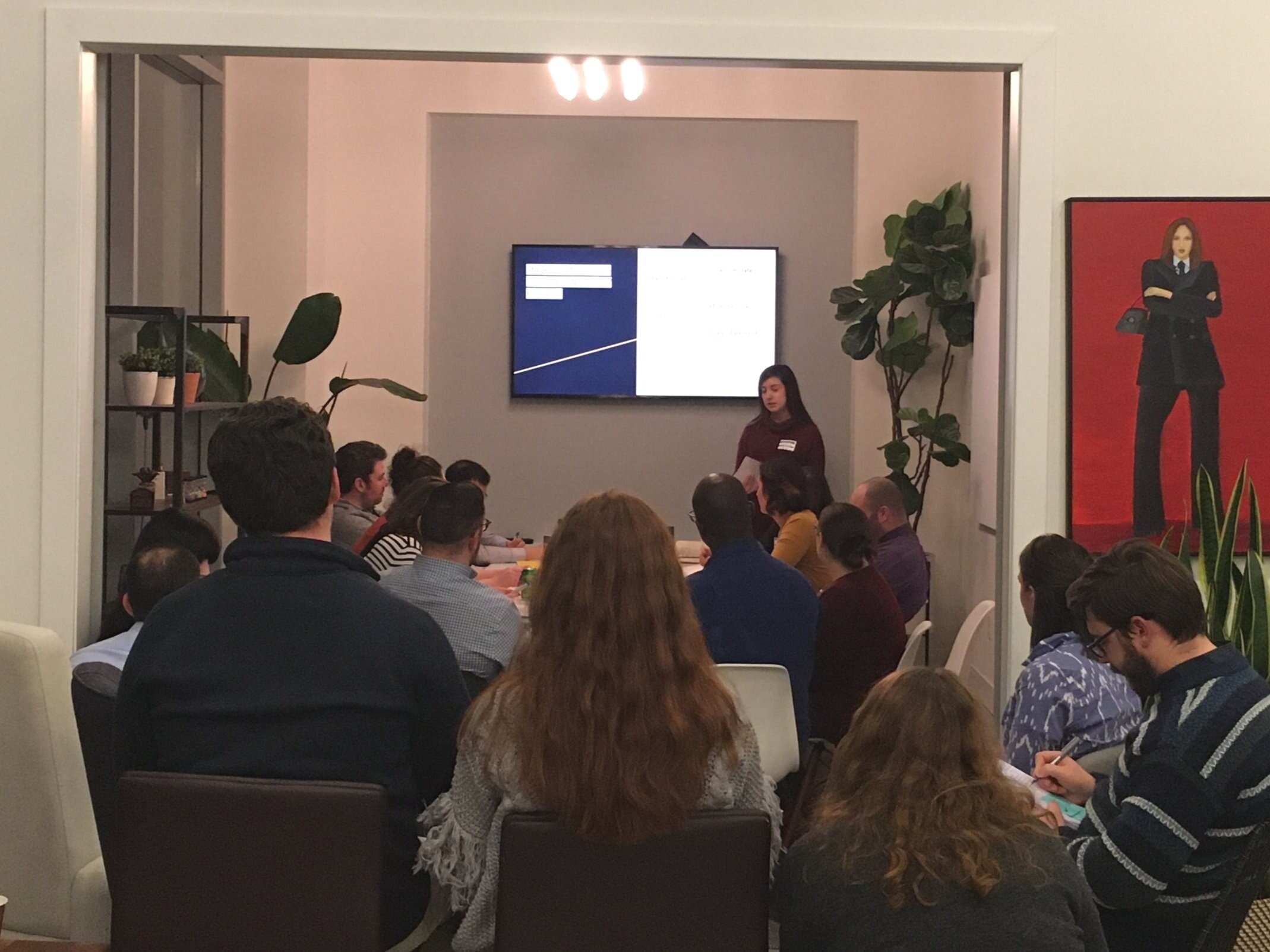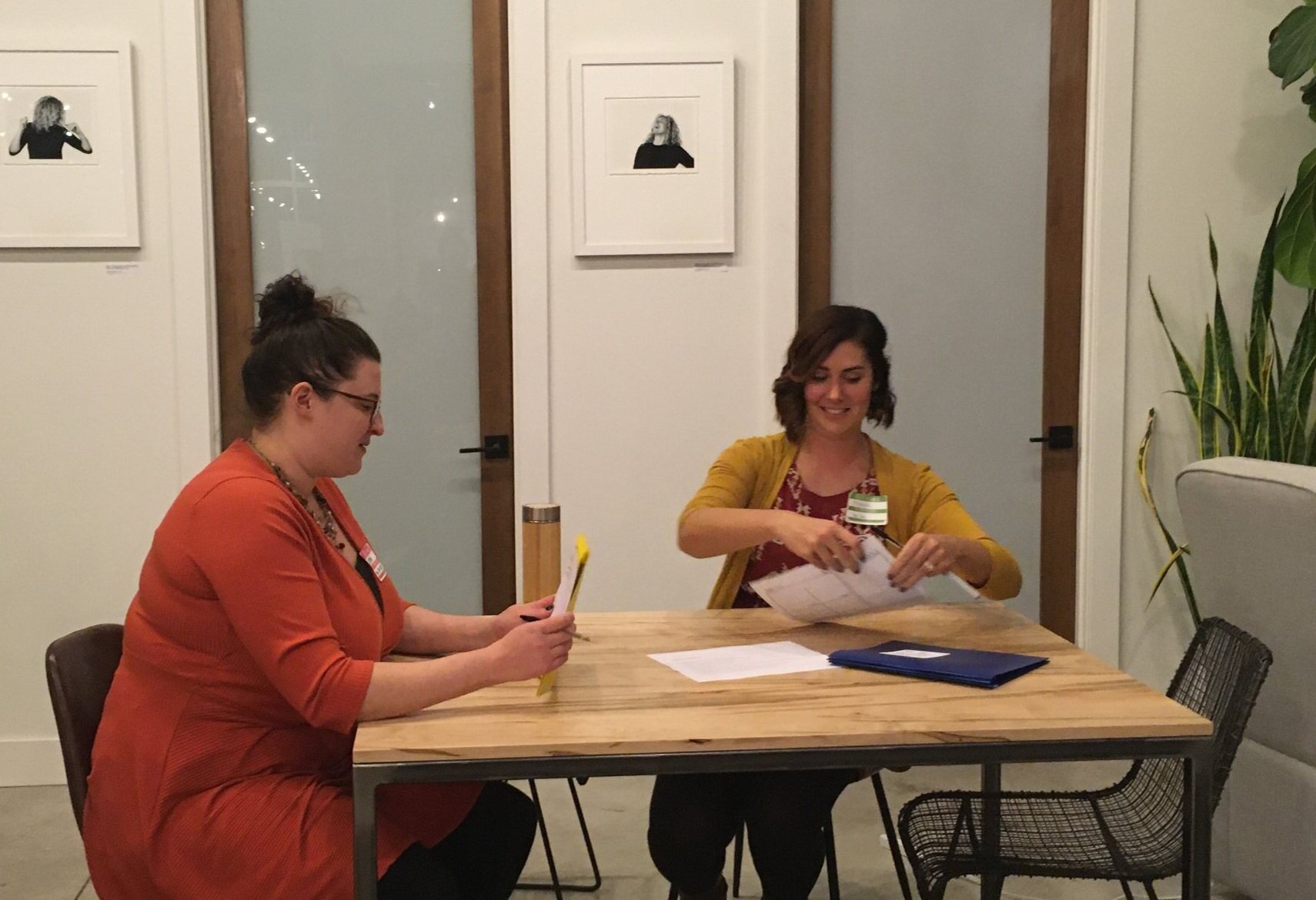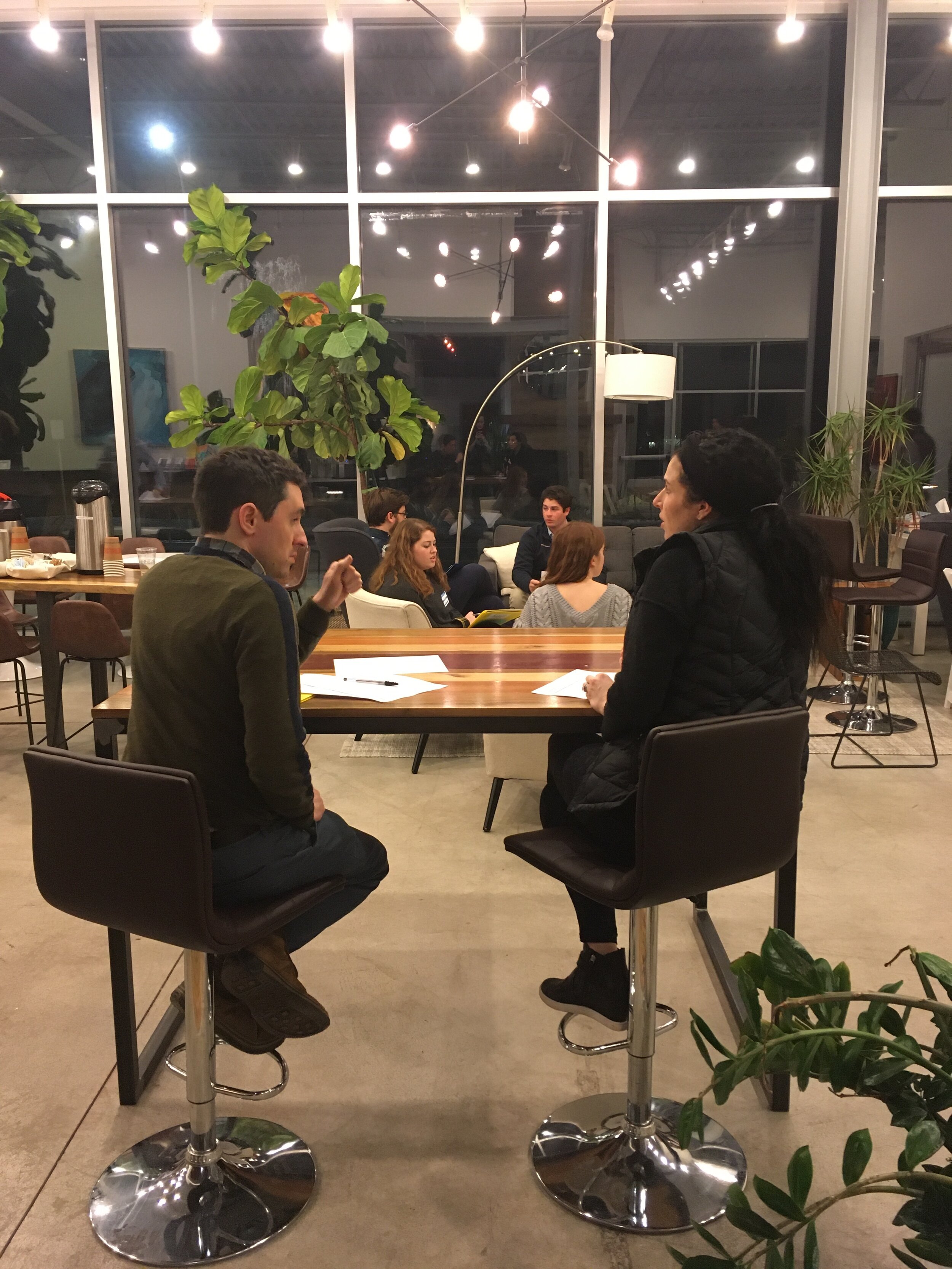5 things we learned from the YALA Leadership Series Sampler
Everything you ever wanted to know about design-thinking
On Tuesday night, the YALA Leadership Series kicked off its 2020 Leadership Series with a free series sampler, hosted at ModernWell. This first session helped potential cohort members get to know both YALA and each other—and it was a fun way to explore the concepts that make up design-thinking, a model for creative problem-solving that organizations can use to get to the bottom of their latest projects. Led by Mackenzie Litt, Assistant Director at Minnesota Hillel, the sampler was full of good food, good conversation ,and a fun activity that illustrated the creative problem-solving capacity of design-thinking.
Couldn’t make it to the sampler? Here’s five things we took away from the night.
Leadership is not just found in the boardroom. YALA strongly believes that young adults can be leaders in many different aspects, whether through volunteering, starting their own organization, or learning how to be a connector in the community.
You don’t need to be artistic to be creative. Not all creativity comes down to to whether you can draw or not. Like leadership, creativity can be found and expressed many ways.
Design-thinking really makes you walk a mile in someone else’s shoes. It’s an approach to problem-solving that actually has “empathy” as the first step—pretty amazing! It’s meant to help you understand the needs of the people you’re working with and to come to a solution that accurately reflects their wants and needs.
There’s never just one solution to a problem. It doesn’t serve you to get boxed into one way of thinking. Keeping your options open will make you a better problem solver—think of yourself as a designer, constantly looking for new ways to go about your work.
There are five distinct steps to design-thinking. They are Empathize, Define, Ideation, Prototype, and Test. The process starts with you learning about your client’s (or your team’s, or your coworker’s, etc., etc.) wants and needs and ends with your running through a possible solution. If the first thing you try doesn’t work out, you can jump back to an earlier step and re-examine. Did you take all of the project’s needs into account? Are you getting too boxed in to one way of thinking? What small tweaks can you make that will take your solution to the next level? Design-thinking is flexible enough that you never have to start completely over from scratch.
Design-thinking is just one of the many tools that the YALA Leadership Series will be covering to help you discover your true potential as a local leader—whatever that looks like for you!




